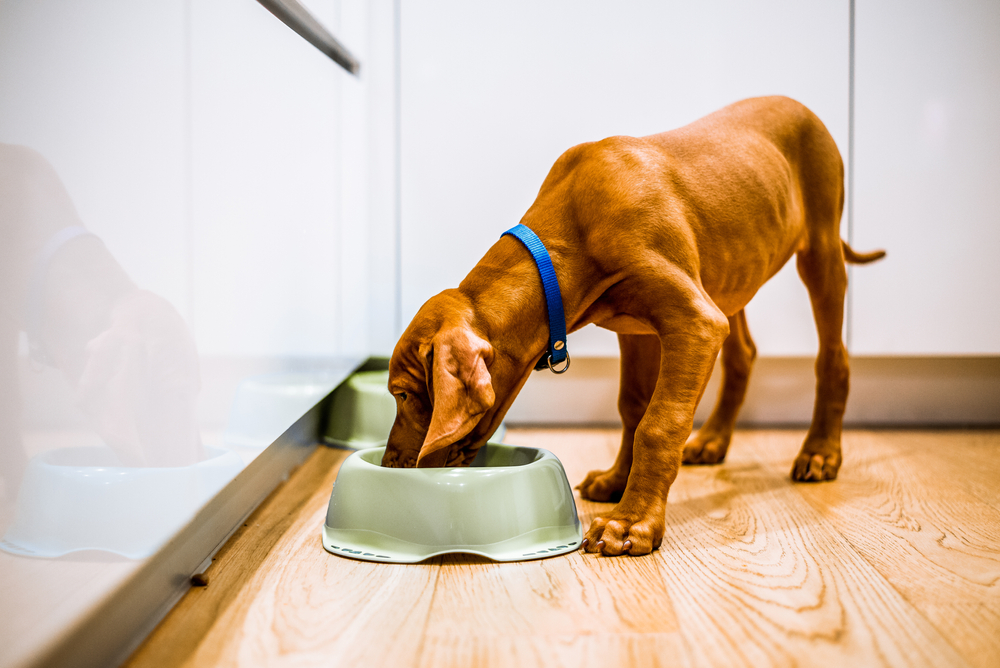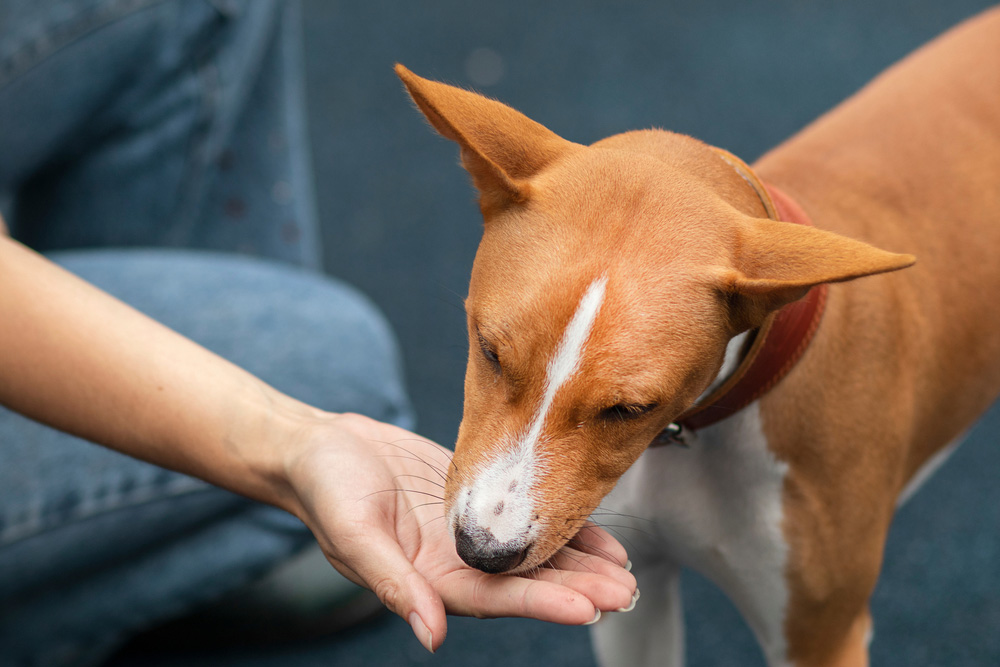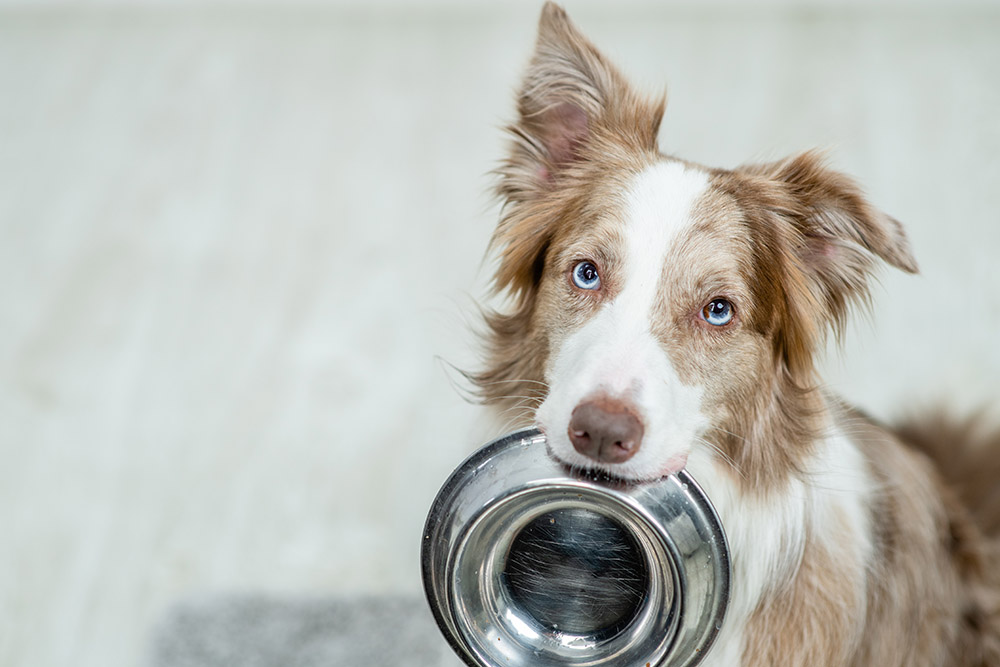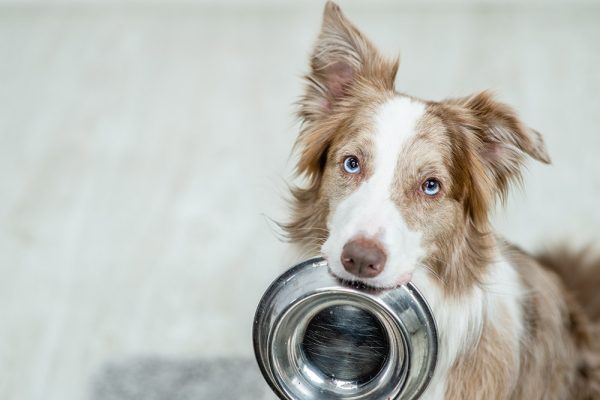Dogs that beg for food can be a huge annoyance during a meal. Plus, if your dog is completely focused on taking food, they may inadvertently eat something toxic. Many of the foods we eat are toxic to our dogs, after all. It can be a safety issue for many dogs that are hyper-focused on human food.
Some dogs only start begging once they are given human food. Other dogs start out begging from the beginning.
Luckily, no matter why your dog is begging, there is a lot you can do to correct it.
The 7 Tips for Stopping a Dog from Begging for Food
1. Feed Them First
Once upon a time, it was thought that you should feed your dog last to “show them who’s boss.” Luckily, the alpha wolf theory that perpetuated the idea that our dogs are trying to dominate us has been largely debunked. Our dogs know we aren’t dogs!
There is no problem with feeding your dog first. You can put their filled bowl up in a different room as you sit down to eat. That way, they’re busy eating their own food instead of worrying about yours!

2. Create a Barrier
Another easy way to prevent begging is to keep your dog out of the room altogether. Create a barrier that they cannot pass. Baby gates or crates can be helpful to physically prevent your dog from going into the room while you’re eating. In some cases, you may be able to put your dog into a safe, fenced-in area outside while you eat.
This option sets you and your dog up for success by simply not allowing them to beg. It doesn’t require any training, and you can implement it at your next meal.
3. Ignore the Begging
If your dog does find the chance to beg, ignore them. Don’t push them away. Don’t tell them “No.” Don’t make eye contact. If you show them any attention, it signals that the begging is working. Your dog’s thinking, “Oh, they just looked at me. Maybe they’re about to share!”
Often, this can be challenging, especially at first. Dogs will often make their begging more and more obvious as you ignore them. After all, they’re trying to get your attention. After the first few times, though, dogs often catch the memo that you just aren’t going to pay attention.

4. Reward Good Behavior
If your dog is relaxed and calm during mealtime, offer them a treat afterward. We recommend not treating dogs when they’re calm during meals, as this can make things more complicated. After all, if your dog isn’t expecting to get food, and then you give them a treat, suddenly they will be expecting food again. Even if they are begging for a treat and not your food, begging at the table is begging at the table.
That said, it can be helpful to treat your dog after a meal once everything has been put up. Preferably, do it in a different room, though. Otherwise, your dog may still associate the dining table with treats, which isn’t what we want. Don’t do it with human food, and don’t do it every night. Otherwise, they may start begging at the table for their nightly snack.
5. Teach an Alternate Behavior
Some dogs with really entrenched begging behaviors may just continue begging because they don’t know what else to do. In this case, we recommend teaching them something else to do during dinner time.
If your dog isn’t crate-trained, now is a great chance to start. Give them a comfortable crate in a different room, and help them associate it with positive things. Consider giving them a yummy bone or stuffed toy in their crate while you’re eating dinner. It gives your dog something to do during dinner time that doesn’t involve you or your food.
Some people teach their dog a command like “go to bed,” which works similarly to a crate. However, many dogs will have a hard time staying on their bed throughout the whole meal, which is why we recommend using a crate instead.

6. Keep the Table Clean
Don’t leave crumbs or scraps on the table or floor that your dog can access. If your dog regularly finds food around the table, they’re going to start associating the table with food. Inadvertently, this may eventually lead to begging problems!
There are many cases where we may not be able to completely control this. Kids are notorious for dropping food on the floor, especially toddlers. If this is the case for your family, we highly recommend keeping the dog somewhere else while everyone is eating. You can put a baby gate up in the doorway or confine them to a crate in a different room.
The important thing is that your dog isn’t getting rewarded for sniffing around the table.
7. Get Everyone on Board
If your dog has been getting scraps from the table, it’s important that everyone is on board with not feeding the dog from the table anymore. While many adults will agree to this, it can be harder with children, especially if they’re used to giving the dog treats while they eat. Very young children might not be able to help drop food either, as we discussed above.
In these cases, we highly recommend separating the dog. Again, just like we said in the tip above, this can mean putting them in a separate room or training them in a crate during this time.
If your kids cannot help but feed the dog, it’s important that you remove that opportunity by separating them during meal times.

Final Thoughts
Teaching your dog not to beg is often more about your self-control than your canine’s. Teaching your dog not to beg in the future means to stop rewarding them for begging now. That includes giving them food and attention. Even telling a dog to stop begging can encourage more begging, especially if your dog is used to it!
It’s best to implement as many physical barriers as possible. Don’t let yourself (or anyone else) reward your dog for begging by simply removing the opportunity. When you’re eating, use a baby gate to keep your dog away from the table. You can even crate-train them during mealtimes.
By implementing these tips, you can help eliminate your dog’s begging. Over time, you may be able to stop many of these preventative steps as your dog loses interest in begging. Some dogs will eventually stop begging and can then be allowed near the table again.
Featured Image Credit: Ermolaev Alexander, Shutterstock











